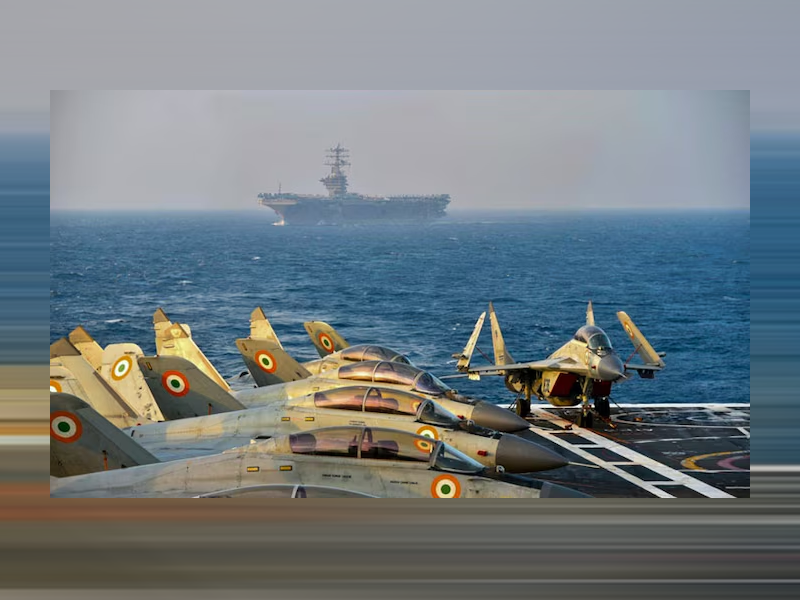COLLABORATIVE SECURITY IN THE INDIAN OCEAN: AMAN-25, A SUCCESSFUL ENDEAVOUR

- 153
- 0
By Dr Maliha Zeba Khan
The Indian Ocean Region (IOR) is considered one of the busiest maritime regions,having a distinction of being the hub of economic, political, and strategic activities with implausible impact on the geo-strategy and maritime security of the region rimming 30 states.
The IOR allows passing through of almost 80% trade of the world energy resources. Thisregion is laced up with vital SLOCs, competing and clashing interests of the regional and extra regional states, emerging patterns of convergence and divergence of interests of the states, tapping and exploring of the living and non-living marine resources further causing several vulnerabilities for the littorals of this region regarding the maritime security. As the matter of fact, the realities in the maritime domain are quite different, complex, and intense; hence need comprehensive approach and strategies to counter these security threats and challenges. The states do face not only traditional challenges within their maritime frontiers, but number of non-traditional security threats is there to make security environment more vulnerable, challenging, and complex. These threats are quite diverse and include external aggression and trespassing, illegal passage of prohibited vessels/ warships, illicit economic activities varying from prohibited practices regarding fishing and other living marine resources, damage to non-living marine resources, theft and smuggling of marine resources including sand and gravel along with others, gun running, kidnapping for ransom, high-jacking of boats and ships, piracy, narco-terrorism, strategic maritime terrorism like damaging of submarine fiber-optic cables or causing deliberate harm to the SLOCs or strategic assets like oil rigs, naval installations, vessels, or other naval arsenals are considered the most serious threats. Similarly challenges in the maritime domain become grave when the states’ involvement gets intense and there come paradigm shifts in the geopolitical environment of the maritime regions.
Pakistan is the country which is not only rimming the Indian Ocean but due to its geo-strategic location, it has been quite significant in the regional geopolitics as well as vulnerable due to number of reason including its immense maritime potential, both on-shore and off the shore as well as its vast maritime territory as the Exclusive Economic Zone (EEZ) and the Continental Shelf; the busiest SLOCs passing through its EEZ and the Continental Shelf; closer proximity with the three main choke points, Strait of Hormuz, Bab-ul-Mandeb, and Mozambique Channel;strategic concernsdue to increased role of regional, sub-regional and extra regional actors in the IOR like India-Iran strategic deal, Indo-US strategic deal, the US-Naval presence at Bahrain, establishment of QUAD, intercontinental organized criminal networks and illicit cartels, and piracy. Due to such vulnerabilities, the collaborative maritime security mechanisms are the most appropriate defense for Pakistan constructed upon the fundamental elements of region as area of interest, common security goals, cooperative security and collective arrangements. Pakistan’s Naval Forces have been having sound reputations regarding the collaborative security measures. Pakistan has been an effective part of coalition and collaborative activities to provide security to the IOR since decades. The Combined Task Force (CTF)-150 for deterring and countering maritime terrorism and CTF-151for countering piracy have proved very effective regarding providing security to the IOR.
Another prominent and pragmatic step taken by Pakistan Navy is establishing of theRegional Maritime Security Patrols (RMSP) in the IOR to constitute a robust presence to provide security to the region, especially the Western and Southern IOR. The security patrolling has helped remarkably to maintain order within the IOR in general and the Arabian Sea in particular.The initiative of the naval exercise “AMAN” taken by the Pakistan Navy in the year 2007 was a unique step which provided extensive opportunities to 28 states to team up their efforts in countering the threats and to enhance their operational competences through collaboration among regional and extra regional navies. The “AMAN” initiative is biennial arrangement which has been fetching great attention by the world. In the first exercise of “AMAN” held in 2007, there were fourteen ships under the flags of the US, UK, China, France, Italy, Bangladesh and Malaysia participated in the exercise, while Explosive Ordnance Disposal (EOD) under Special Operations Forces (SOF) from Turkiye and Bangladesh took part in the AMAN-07, whereas 21 countries joined in the event with “Observer” status. The next exercise of that series was “AMAN-09” with participation of 24 countries in which the US, UK, China, France, Australia, Malaysia, and Bangladesh joined in with their 14 ships whereas Japan took part with two P-3C aircrafts. The number of SOF teams was increased that year as 9 teams from the US, China, Turkiye, Nigeria and Bangladesh participated in the exercise while 27 countries were there with the “Observer” status.AMAN-11 was attended by 28 countries, in which 11 ships from the US, Australia, China, Saudi Arabia, Italy, Indonesia, Malaysia, and France took part, whereas 43 “Observers” attended the exercise.AMAN-13 was held as the 4th exercise of the series with 29 international Navies, whereas the number of “Observers” was 36. The 5th exercise in the row was AMAN-17 in which 35 Navies took part while China, Australia, Russia, UK, Turkiye, Indonesia and Sri Lanka joined in with twelve ships.
A very significant thing was increase in the number of “Observers” which became 67, and the number of the Explosives Ordnance Disposal teams participating in the exercise were 10 which belonged to the UK, Russia, China, Indonesia, Malaysia, Maldives, Sri Lanka and Turkiye. The AMAN-19 was sixth exercise held in 2019 with more than45 countriesparticipated in it. The AMAN-21 was the seventh edition wherein 42 countries participated while in AMAN-23 had seen participation of overall 50 countries. The upcoming “AMAN-25” will see the participation of more than 50 countries. This multinational, spatiotemporal exercise is aimed at providing the participating states opportunities to enhance their theatrical interoperability and collaborative measures to promote peaceful, stable, and sustainable maritime order. This collaborative security mechanism will eventually provide the guests states with the opportunity to enhance the coalitions for common/shared objectives and goals through collaborative security mechanism. The AMAN-25is divided into two phases which are going to be conducted on the Harbor and in the Sea. This exercise will strengthen Pakistan’s positive image as well as its command and control within the IOR. As Gwadar port has been gathered much of the world attention, this exercise will augment Pakistan Navy’s operational capabilities too to provide flawless security to Gwadar and the maritime connectivity, the Maritime Silk Road. It is hoped that Pakistan will emerge as the state which would explore its maritime potential regarding its geo-economics, geo-strategy, and geo-politics, and AMAN-25 will prove effective for further collaboration in the maritime domain.It is important to highlight that alongside AMAN exercise, maiden AMAN Dialogue is being conducted wherein heads of navies, coast guards, other officials are invited to share their perspectives on critical maritime security issues.

















































